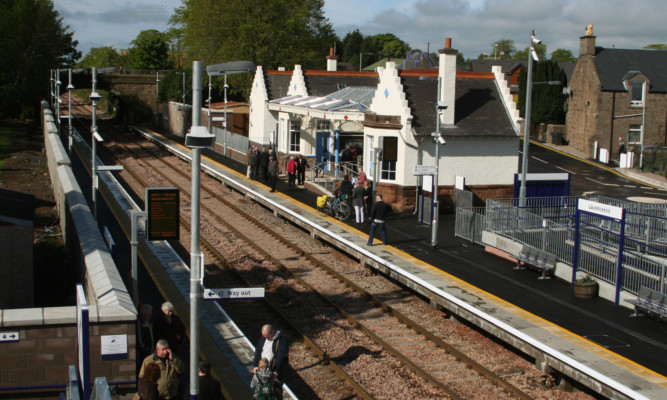For 42 years it was a ghost station but now it’s a “ghostly voice” which greets passengers to Laurencekirk.
ScotRail has now been told to update on-board announcements which fall silent when the train arrives at the Mearns station.
The automated announcement at Laurencekirk currently states: “We are now approaching…” before a deathly silence is heard.
Clint Eastwood was famously the Man with No Name but ScotRail will now remedy the oversight to ensure Laurencekirk is no longer The Station with No Name.
A spokeswoman for ScotRail said: “The on-board announcement problem with Laurencekirk has only recently been brought to our attention.
“We are in contact with the external company responsible for recording our on-board audio announcements and are working with them to rectify this issue as a matter of priority.
“We hope to have the on-board announcements updated by the December timetable change.”
MSP Mark McDonald brought what he described as an “awkward silence” to the attention of ScotRail following a recent journey.
He said: “Laurencekirk station has been open for years.
“And yet they still haven’t updated the automated announcement on the trains to include it.
“I’ve never been on a train yet where the automated announcement mentions Laurencekirk station.”
The B-listed stone building at Laurencekirk was originally built in 1848, complete with cast-iron and glass canopy and period fireplaces.
The line joined the North British, Arbroath and Montrose Railway north of Montrose at Kinnaber Junction and Arbroath and Forfar Railway at the triangular junctions at Friockheim and Guthrie.
It was closed in 1967 as part of the Beeching era of rationalisation of the rail network and services.
The station reopened at a cost of £3.9 million in May 2009 following a 15-year campaign to reintroduce rail travel and usage has continued to increase.
To catch a train residents previously had to drive nine miles to Montrose and in many cases travel back through the former Laurencekirk station en-route.
Eleven northbound and 10 southbound services now pass through every day from Monday to Saturday and three trains go each way on a Sunday.
Campaigners said the station was making the Mearns burgh a more attractive place to live, and the high number of rail users strengthened the case for more trains to stop and better bus connections.
